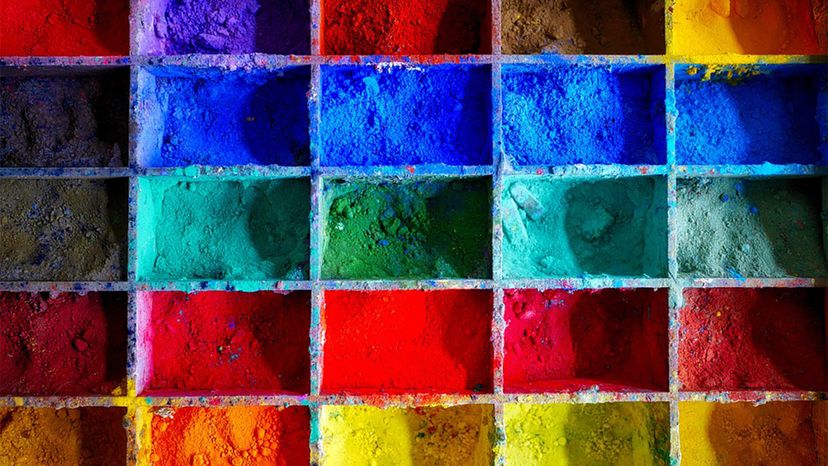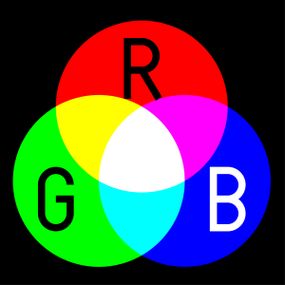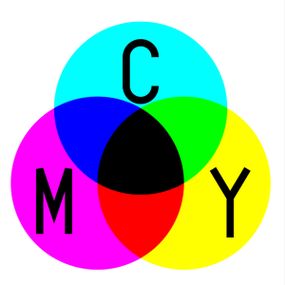
Go ahead and ask Google — the knower of all things — to name the primary colors. You'll get a straightforward answer that likely aligns with everything you learned as an elementary school coloring book expert. The primary colors are red, yellow and blue.
But as with most seemingly simple concepts, the answer is actually a whole lot more complex. And while Google isn't exactly lying to you, it doesn't exactly tell the whole story, either.
Advertisem*nt
Contents
- What Are Primary Colors?
- Additive Color Mixing
- Subtractive Color Mixing
- The Distinction Between Additive and Subtractive ... And Why It's Wrong
- The Truth About Red and Blue
What Are Primary Colors?
Here's the deal about primary colors: The players depend on the game. In other words, if you're talking about painting, then yes: Red, yellow and blue are your primary colors. If you're talking about physics and light, though, your primary colors are red, green and blue.
So, what gives? The reason for the confusing contradiction is that there are two different color theories — for "material colors" like the ones used by painters and for colored light. These two theories are known as additive and subtractive color systems.
Advertisem*nt
Stephen Westland, Professor of Colour Science at the University of Leeds in England breaks things down into simple terms (before getting into the confusing complexities), in an email. "We see because light enters our eyes," he says. "Light enters our eyes in two ways: (1) directly from a light source; and (2) reflected from an object. This leads to two types of colour mixing, additive and subtractive." [We have retained the British spelling of the word "colour" here.]
"Both systems are accomplishing one task," says Mark Fairchild, professor and director of the Program of Color Science/Munsell Color Science Laboratory at Rochester Institute of Technology in New York. "That is to modulate the responses of the three types of cone photoreceptors in our eyes. Those are roughly sensitive to red, green and blue light. The additive primaries do this very directly by controlling the amounts of red, green and blue light that we see and therefore almost directly map to the visual responses. The subtractive primaries also modulate red, green and blue light, but a little less directly."
Let's get into those distinctions — but fair warning: everything you know about primary colors is about to change before your eyes.
Advertisem*nt
Additive Color Mixing
Let's talk about the additive system first. When he was 23 years old, Isaac Newton made a revolutionary discovery: By using prisms and mirrors, he could combine the red, green and blue (RGB) regions of a reflected rainbow to create white light. Newton deemed those three colors the "primary" colors since they were the basic ingredients needed to create clear, white light.
"Additive colors are those which make more light when they are mixed together," says Richard Raiselis, Associate Professor of Art at Boston University School of Visual Arts. "A simple way to think about additive light is to imagine three flashlights projecting individual circles of light onto a wall. The shared intersection of two flashlight circles is brighter than either of the circles, and the third flashlight circle intersection will be brighter still. With each mix, we add lightness, therefore we call this kind of mixture additive light." If you imagine each flashlight is fitted with a transparent color filter — one red, one green and one blue — Raiselis says that's the key to understanding additive color mixing.
Advertisem*nt

"When the blue flashlight circle intersects the green one, there is a lighter blue-green shape," he says. "It's cyan. The red and blue mix is lighter too, a beautiful magenta. And the red and green also make a lighter color — and a surprise to nearly everyone who sees it – yellow! So red, green and blue are additive primaries because they can make all other colors, even yellow. When mixed together, red, green and blue lights make white light. Your computer screen and TV work this way. And if you've been onstage, you might have looked up behind the curtain to see the red, green and blue lights that serve as theatre's additive primary colors."
"In simple terms, additive color mixing is where we have a device such as a TV or a smartphone screen that emits light," Westland says. "In most devices, three different colors of light (primaries) are emitted and as they are used they are added together." But the range — or gamut — of colors that can be produced from three additive primaries varies depending upon what the primaries are. Most sources will tell you red, green and blue are the additive primaries, as Newton originally proposed, but Westland says it's a lot more complicated than that.
"It is often mistakenly written that RGB are optimal because the visual system has receptors in the eye that respond optimally to red, green and blue light but this is a misconception," he says. "The long-wavelength sensitive cone, for example, has peak sensitivity in the yellow-green part of the spectrum, not the red part."
Advertisem*nt
Subtractive Color Mixing
Enter subtractive color. "Subtractive colour mixing results when we mix together paints or inks," Westland says. "It relates to all of the colours we see of non-emissive objects, such as textiles, paints, plastics, inks, etc. "These materials are seen because they reflect the incident light that falls upon them. Take a piece of white paper; this paper reflects all of the wavelengths in the visible spectrum to a very high degree. Now add a yellow ink on top of the paper. The yellow ink absorbs the blue wavelengths, leaving the others — which are seen as yellow — to be reflected. So rather than being additive, in this case we start with white (all the wavelengths being reflected) and then start to subtract light at certain wavelengths as we add the primaries."

So the distinction in color systems really comes down to the chemical makeup of the objects involved and how they reflect light. Additive theory is based on objects that emit light, while subtractive deals with material objects like books and paintings. "Subtractive colors are those which reflect less light when they are mixed together," says Raiselis. "When artists' paints are mixed together, some light is absorbed, making colors that are darker and duller than the parent colors. Painters' subtractive primary colors are red, yellow and blue. These three hues are called primary because they cannot be made with mixtures of other pigments."
Advertisem*nt
So, Crayola and Google aren't wrong — in the material world, red, blue and yellow are the primary colors that can be combined to create additional colors of the rainbow. But if you're talking about anything tech-related (as most of us are these days), remember that the primary colors for TVs, computer screens, mobile devices and more, all subscribe to Newton's light-emitting system, so their primary colors are red, green and blue. Kind of. Well, not really.
Advertisem*nt
The Distinction Between Additive and Subtractive ... And Why It's Wrong
"It turns out that if we use three primaries, the best ones to use are cyan, magenta and yellow," Westland says. "Note that these are the primaries that have been identified by the large printing companies who will use CMY (and often black as well) in their commercial devices to make a large range of colors. The idea that the subtractive primaries are red, yellow and blue (RYB) is confusing and should not be taught. It would be wrong to think that cyan and magenta are just fancy names for blue and red."
It's shocking, but true: The names we've been using for our primary colors when it comes to coloring books and paint chips? Totally wrong. "The subtractive primaries are really cyan, magenta, and yellow," Fairchild says. "The names 'blue' for the 'cyan' and 'red' for the 'magenta' are typically misnomers. Other colors can be used as primaries, but they will not produce as wide a range of color mixtures."
Advertisem*nt
The reason behind these inaccurate terms? Light. "The yellow primary controls the amount of blue light reaching our eyes," Fairchild says. "A small amount of yellow primary removes a small amount of blue light from the original white stimulus (e.g. white paper in printing or a white canvas), while a larger amount of yellow removes more blue light. The magenta primary controls the amount of green light and, finally, the cyan primary controls the amount of red light. The subtractive primaries do this by absorbing different amounts of red, green and blue, while the additive primaries simply emit different amounts. It's all about controlling the amounts of red, green and blue light."
Westland offers a scholastic example to illustrate the rampant misconception around primaries. "Imagine you are teaching colour science at school and you explain that the additive primaries are RGB and that the subtractive primaries are RYB," he says. "A particularly bright student asks you: 'why are two of the primaries the same in both systems (R and B) but the G in the additive system is replaced by the Y in the subtractive system?' This is a horrible question because it has no rational answer."
You have to love the candor. The reason for the lack of rationale is that, as we've discussed, red, yellow and blue aren't the real subtractive primaries at all — magenta, yellow, and cyan are. "It turns out that RYB is in fact a particularly poor choice of subtractive primaries," Westland says. "Many of the mixtures that are produced are dull and desaturated and consequently, the gamut of colours you can produce will be small. What you should teach is that there is a clear relationship between the additive and subtractive colour primaries. The optimal additive primaries are RGB. The optimal subtractive primaries are cyan (which is red absorbing), magenta (which is green absorbing), and yellow (which is blue absorbing). Now, there is no conflict between the two systems and, in fact, it can be seen that additive and subtractive primaries are almost mirror images of each other. The best subtractive primaries are CMY because the best additive primaries are RGB."
So, if cyan, magenta and yellow are the real deal primaries when it comes to tactile objects, why does just about everyone on the planet still think the honor belongs to red, blue and yellow? "Well, partly because they are incorrectly taught this from their first days at school," Westland says. "But also because it seems intuitive. It seems intuitive because people believe the following: 1) That it is possible to make all colours by mixing together three primaries, and 2) That the primaries are pure colours that cannot be made by mixing other colours."
So ... those beliefs are wrong?
Advertisem*nt
The Truth About Red and Blue
Well, yes, according to Westland, the idea that three pure primaries can create al the colors in the world is totally false. "We cannot make all colours from three primaries no matter how carefully we choose the primaries," he says. "We cannot do it with additive colour mixing and we cannot do it with subtractive colour mixing. If we use three primaries, we can make all the hues, but we cannot make all the colours; we will always struggle to make really saturated (vivid) colours."
Here's the thing: even though we're taught to think of red and blue as "pure" colors, they're simply not. Here's how to prove that: open an art program on your computer and create a red patch on the screen. Then print the patch using a CMYK printer. "The printer will produce red by mixing the magenta and yellow inks that it has," Westland says. "Red can be made by mixing together magenta and yellow. If we use RYB or CMY — or, indeed, almost any other sensible set of three primaries, obviously not three reds! — then we can make all hues; however, we cannot make all the colors. But we will get the biggest gamut of colours using CMY and that is why we can say that CMY are the optimal subtractive primaries just as RGB are the optimal additive primaries."
Advertisem*nt
And as far as blue goes, it's not as pure as you think either. "It looks pure because it absorbs strongly in two thirds of the spectrum," Westland says. "It absorbs in the green and red parts. Red absorbs in the blue and green parts. If we mix them together, between them they are absorbing everywhere! The resultant mixture, although it may be a purple colour, will be dull and dark. The absorption spectra of these colours are too broad. It is better to use cyan than blue because cyan absorbs mainly in the red part of the spectrum; and magenta absorbs mainly in the green part of the spectrum. If we add magenta and cyan together we get absorbing in the red and green parts of the spectrum but we allow the blue light to be reflected."
To break it down, Westland offers this handy dandy guide:
B = M + C
G = C + Y
R = Y + M
If this in-depth explanation busted every color myth that's been ingrained in your brain since childhood and you're feeling a bit panicked, take heart: coloring books are reportedly great stress busters. And if you're desperate to learn more, check out Westland's two-minute video series on the subject and his blog. Fairchild also created a great resource that he says is for kids, but honestly — every adult should be required to study it.
Now That's Interesting
If you feel like every person you've dated has cited blue as their favorite color, you're probably not mistaken – apparently, 40 percent of the worldwide population says it's their fave (purple is a close second at 14 percent).
Advertisem*nt
Originally Published: Jul 2, 2019
Primary Colors FAQ
What are the real primary colors?
In art class, we learned that the three primary colors are red, yellow and blue. In the world of physics, however, the three primary colors are red, green and blue.
What is additive color mixing?
Additive color mixing is the process of mixing red, green and blue light in different ways to create new colors. Every light source addition makes the resulting color brighter and closer to white. Combining all three colors equally results in white while removing them results in black.
What is subtractive color mixing?
Subtractive color mixing involves mixing paint pigments and ink that absorb or selectively transmit light. In this type of mixing, cyan, magenta and yellow are used, all of which reflect less light when mixed.
What is the difference between additive and subtractive color?
An additive color is one created by mixing red, green and blue light in different combinations. Additive colors begin as black and become brighter as you add different light. In contrast, a subtractive color is made by partial absorption of different colors of paint or ink. They begin as white and take on the appearance of the added colors or their mixtures.
What are the primary colors in the CMYK color model?
The three primary colors of the CMYK or subtractive color mixing model are cyan, magenta and yellow.